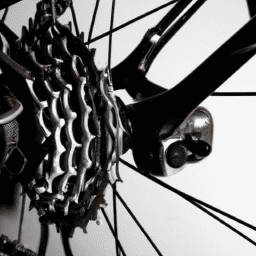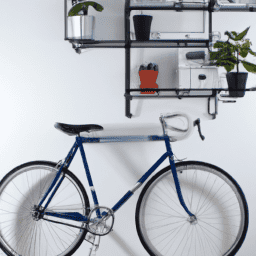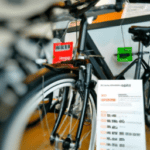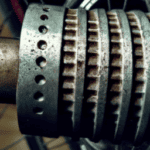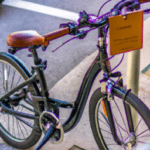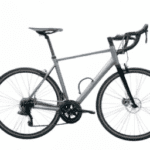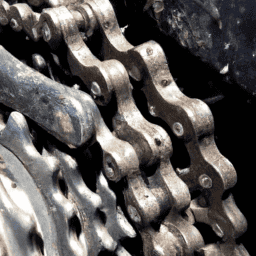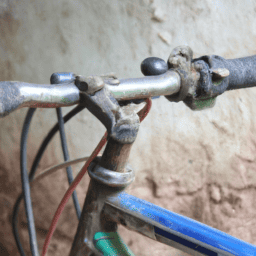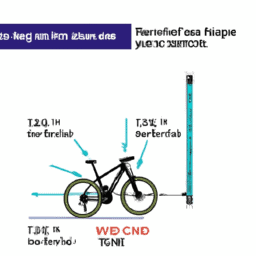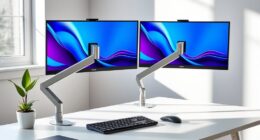As an enthusiast of biking, I’m aware that acquiring a quality bike represents a substantial financial commitment. However, what is the actual price of a decent bike? Similar to many other purchases, the cost varies. Factors such as the desired bicycle model, the manufacturer and its quality, along with extra features, all contribute to the final cost.
In this article, I’ll break down the various factors that impact the cost of a bicycle and give you an idea of what you can expect to pay for a good-quality bike.
First, it’s important to understand that there are many different types of bicycles, each designed for a specific purpose. From road bikes to mountain bikes, hybrid bikes to cruisers, the type of bike you choose will impact the price.
Additionally, the brand and quality of the bike will also play a role in determining the cost. While you can certainly find inexpensive bikes, you often get what you pay for in terms of durability, performance, and overall quality.
In the following sections, I’ll delve deeper into these factors and give you a better idea of what you can expect to pay for a good bicycle.
Key Takeaways
- The cost of a good bicycle can range from $500 to $10,000 depending on the type, brand, and quality.
- Different types of bicycles are designed for specific purposes, such as mountain bikes for off-road terrain and road bikes for speed and efficiency on smooth surfaces.
- Reputable brands like Trek, Specialized, and Giant offer top-notch durability, performance, and features, while budget options like Schwinn, Diamondback, and Raleigh may not have the same level of durability and features.
- Choosing the right bike requires careful consideration of your intended use, budget, personal preferences, and size.
Types of Bicycles
There’s a wide variety of bicycles available, but it’s important to remember that each type has its own unique features and benefits. Two of the most popular types are mountain and road bikes. Mountain bikes are designed for off-road terrain and have sturdy frames, wide tires, and suspension systems that absorb shock. They’re great for exploring rough terrain, steep hills, and rocky trails.
On the other hand, road bikes are built for speed and efficiency on smooth surfaces. They have lightweight frames, narrow tires, and drop handlebars that allow riders to get into an aerodynamic position. They’re ideal for long-distance rides on paved roads or bike paths.
When it comes to folding vs electric bikes, it really depends on your personal preferences and needs. Folding bikes are great for commuters or people with limited storage space, as they can easily be folded and stored in a small area. Electric bikes, on the other hand, provide an extra boost of power and are ideal for longer rides or hilly terrain. They can be more expensive than traditional bikes, but they’re worth it if you need that extra assistance.
Ultimately, the type of bike you choose will depend on your individual needs and preferences. When considering the brand and quality of a bike, there are many factors to consider. It’s important to buy from a reputable brand that has a history of producing high-quality bikes. Look for features such as durable frames, reliable components, and comfortable seats. Don’t be afraid to invest in a quality bike, as it will provide you with years of enjoyment and reliable transportation.
Brand and Quality
You think buying a high-end bike from a top brand is a terrible idea? Think again, my friend. Popular brands like Trek, Specialized, and Giant offer top-notch durability, performance, and features that make them worth the investment. These bikes are built using high-quality components and materials that ensure a smooth and efficient ride. Plus, they often come with warranties and excellent customer support, which can give you peace of mind knowing that you’re investing in a reliable product.
However, if you’re on a tight budget, there are still options available that can offer good performance without breaking the bank. Budget options like Schwinn, Diamondback, and Raleigh may not have the same level of durability and features as the top brands, but they can still provide a solid ride for casual cyclists. Keep in mind that you may need to replace components more frequently with these bikes, but they can still be a great option for those looking to save some money.
When considering brand and quality, it’s important to weigh your options and prioritize what’s most important to you. But no matter what bike you choose, additional features such as suspension, gears, and brakes can greatly enhance your riding experience.
Additional Features
To truly enhance your cycling experience, it’s essential to consider what additional features the bike offers and how they can benefit you. One of the most important features to consider is the handlebars. Ergonomic handlebars can make a huge difference in your comfort level while cycling. They’re designed to reduce strain on your wrists and hands, allowing you to ride for longer periods of time without experiencing discomfort. Some bikes even offer adjustable handlebars, allowing you to customize the position to your liking.
Another feature to consider is the saddle. A comfortable saddle can make all the difference in the world when it comes to enjoying your ride. Many bikes come with standard saddles, but some brands offer customized saddle options. These saddles are designed to fit your body’s unique shape and provide maximum comfort. A good saddle can also help reduce pressure on your lower back and hips, making your ride more enjoyable overall.
When it comes to buying a bicycle, there are many features to consider, including the ones mentioned above. However, it’s important to keep in mind that the cost of the bike will vary depending on the features you choose.
In the next section, we’ll discuss the different price ranges and what you can expect at each level.
Price Ranges
Investing in a high-quality bike that fits your needs and budget can be a smart decision, and understanding the different price ranges available can help you make an informed choice. Generally, a good quality bike can cost anywhere from $500 to $10,000. The price can vary depending on the type of bike, materials used, and additional features.
If you’re on a tight budget, buying a used bike can be a great option. However, it’s important to do your research and make sure you’re getting a bike that’s in good condition. Financing options are also available for those who don’t want to pay the full amount upfront. Keep in mind that financing can add additional costs over time, so make sure to carefully consider the terms before committing.
Choosing the right bike for your needs requires careful consideration of your intended use, budget, and personal preferences.
Choosing the Right Bike for Your Needs
Picking out the perfect bike can seem overwhelming at first, but with a little research and consideration of your riding needs, it can be an exciting and rewarding process.
One of the most important factors to consider when choosing a bike is size. A bike that’s too big or too small can be uncomfortable and even dangerous to ride. When selecting the right size, consider your height, inseam length, and riding position.
Another key factor to consider is your riding style. Different types of bikes are designed for different purposes and terrain. For example, a road bike is designed for speed and efficiency on smooth pavement, while a mountain bike is built for rugged terrain and off-road adventures. Consider where and how you’ll be riding your bike, and choose a style that’s best suited for your needs.
With these factors in mind, you can confidently choose a bike that’ll provide you with a comfortable and enjoyable riding experience.
Frequently Asked Questions
How do I properly maintain my bicycle to ensure it lasts as long as possible?
To ensure the longevity of my bicycle, I clean it regularly using a gentle soap and water solution and a soft brush. I lubricate the chain with a high-quality oil and avoid over-greasing. Proper maintenance can extend the life of any bicycle.
Are there any safety regulations or laws I should be aware of when riding my bicycle?
When it comes to riding my bicycle, I always make sure to follow the safety regulations and laws. It’s important to wear a helmet and be aware of bike lane regulations to avoid any accidents or fines.
What are some common mistakes beginners make when purchasing their first bicycle?
Buying a bike is like building a house; it all starts with a strong foundation. Proper bike sizing is key to avoid discomfort and injury. Avoid cheap knockoffs and invest in quality components to ensure a better riding experience.
How do I properly fit a bicycle to my body size and shape?
To properly fit a bicycle to my body size and shape, I first adjust the saddle height to ensure my knees have a slight bend when pedaling. Then, I adjust the handlebar reach to achieve a comfortable position without straining my back or arms.
What are some common accessories or gear I should consider purchasing alongside a new bicycle?
When considering a new bicycle, it’s important to also think about the accessories and apparel you may need. Bicycle accessories like a helmet, lock, lights, and water bottle cage are essential, while cycling apparel like padded shorts and gloves can improve comfort and performance.
Conclusion
In conclusion, finding a good bicycle can be a daunting task, but it’s worth the effort. As someone who loves cycling, I can attest to the joy and health benefits of riding.
The price of a good bicycle can vary greatly depending on the type, brand, quality, and additional features. However, it’s important to remember that investing in a quality bicycle can save you money in the long run by reducing the need for repairs and replacements.
According to a study by the National Institute for Transportation and Communities, people who regularly ride bicycles save an average of $9,000 annually on transportation costs compared to those who rely on cars. This statistic highlights the potential financial benefits of cycling and could be a motivating factor for those considering purchasing a bicycle.
Ultimately, the key to finding the right bicycle is to determine your needs and budget, research your options, and test ride several models before making a decision.
